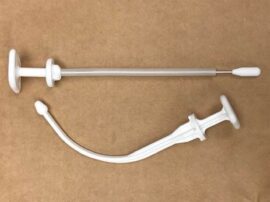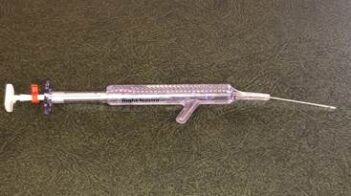Manufacturing any plastic device or part through injection molding is an exact science with little tolerance of defects. Manufacturing plastic medical devices or components takes tolerance down a notch — to zero. The reason is obvious: any device that impacts the health of the user has to be perfect in every way.
Advantech is proud to manufacture US Food and Drug Administration Class II medical components and devices, some of which are being used by frontline healthcare workers fighting the pandemic. Here’s a primer of the different classes, as proscribed by the FDA:
First the boilerplate: The FDA defines any classified device or component as “an instrument, apparatus, implement, machine, contrivance, implant, in vitro reagent, or other similar or related article, including a component part or accessory” that is utilized for a diagnosis, cure, or treatment of a disease or injury. The common denominator of any classified medical device is that it directly or indirectly affects a human or animal body.
That definition encompasses a very wide range of healthcare related items — everything from pacemakers to tongue depressors.
Enter the three-tiered classification system: Class I, II, and III. Though the standards of each seem clear, there are substantial differences within the classes themselves. Take simple generic devices, such as medical trays or elastic bandages, for example — all 1,700 of them. They’re assigned to one of 16 medical panels, which are then attached to one of the three regulatory classes that spell out the degree of control needed to ensure the effectiveness and safety of the device.

differentiator between Class I, II, and III is risk: every medical device is classified by the risks associated with it. Class III devices have the highest risk and are usually those that penetrate or otherwise get inside the human body such as a pacemaker or a scalpel. But even with Class III scalpels there are different, sometime stricter safeguards. For example, a scalpel designed to cut the cornea has to be manufactured to a higher degree of perfection than a scalpel used for an appendectomy.
That said, here are the major differences between the three medical device classes:
Class I
Class I medical devices have a low to moderate risk to the patient and/or healthcare worker. Roughly half of medical devices fall under this category and for 95% of these, the regulatory process is waived. For Class I devices, a notification application before going to market is not necessary, nor is FDA clearance. The manufacturer, however, is required to register their company and manufacturing facility and list their generic product with the FDA. Examples of Class 1 devices include bedpans, enema kits, elastic bandages, and manual stethoscopes.

Class II
Class II medical devices have a moderate to high risk to the patient and/or healthcare worker. 43% of medical devices fall under this category. Most medical devices are considered Class II devices. Examples of Class II devices include powered wheelchairs and some pregnancy test kits. AdvanTech Plastics manufactures Class II devices and components such as nasal syringes, medical trays, healthcare-related container lids and more.
Class III
Class III medical devices have the highest risk to the patient and/or healthcare worker. These devices typically sustain or support life, penetrate the body in some fashion, and present the greatest risk of illness or injury if manufactured improperly. Class III devices represent just 10% of all medical devices and include implantable pacemakers and breast implants.
Plastic injection molding companies in Illinois and elsewhere are on the frontline producing the plastic medical devices the world needs to fight not only this pandemic but a myriad of other maladies affecting humankind.